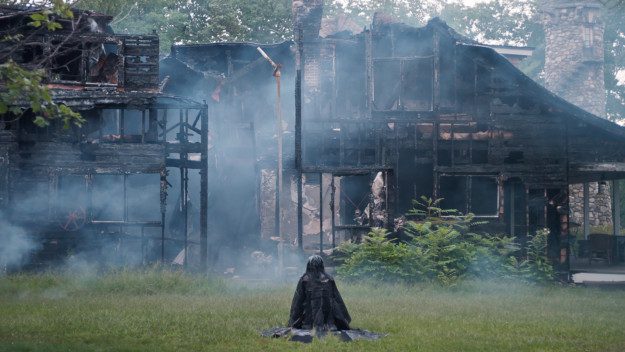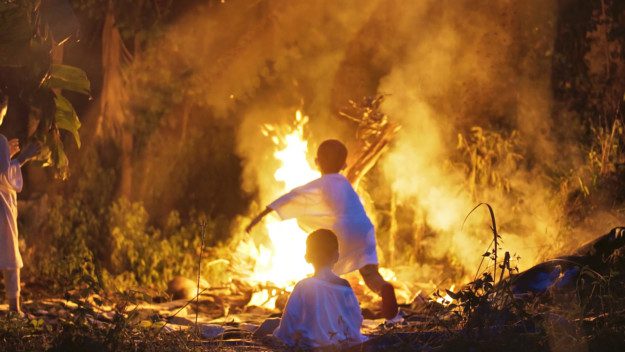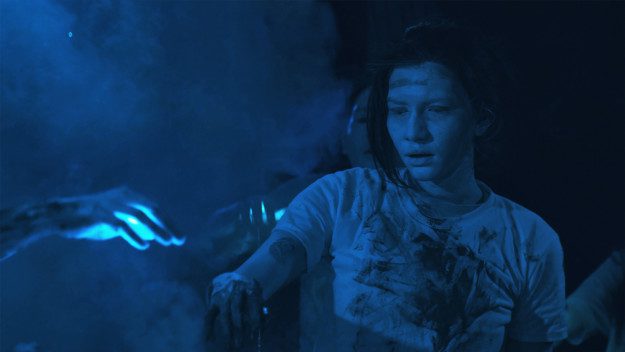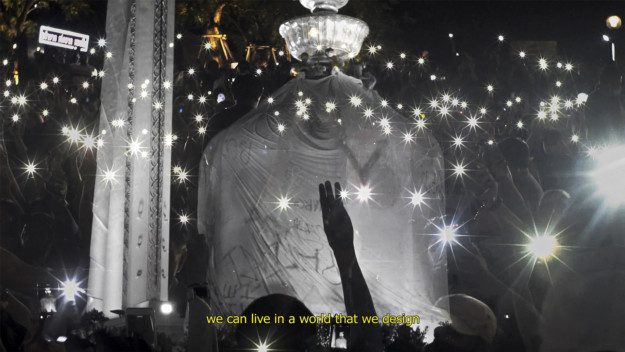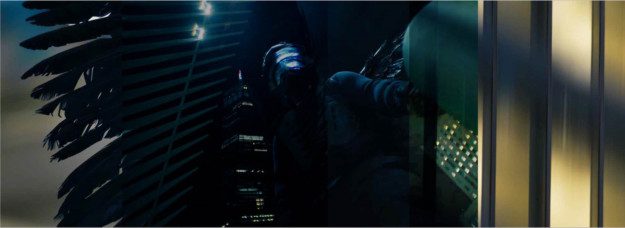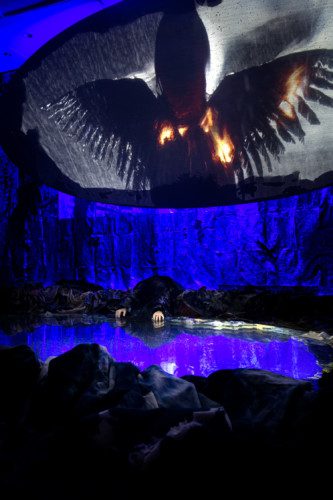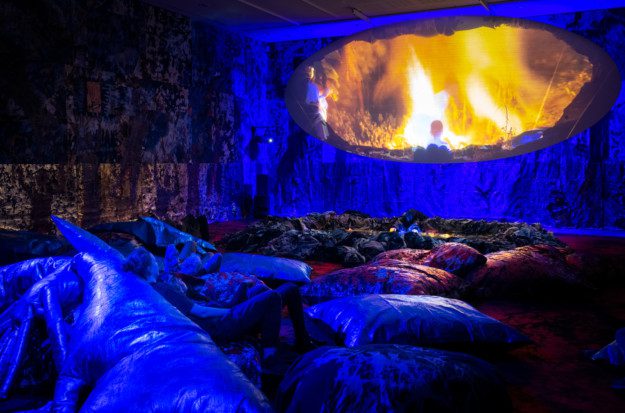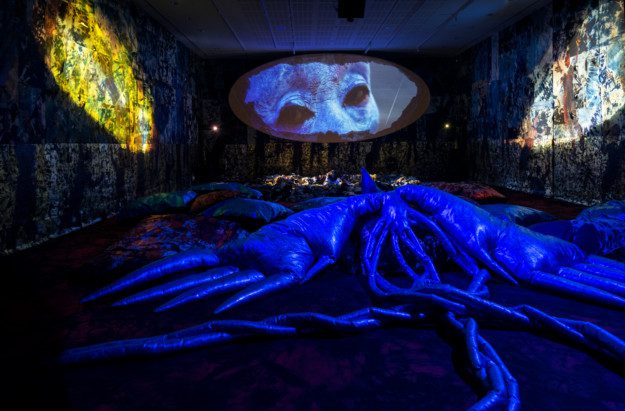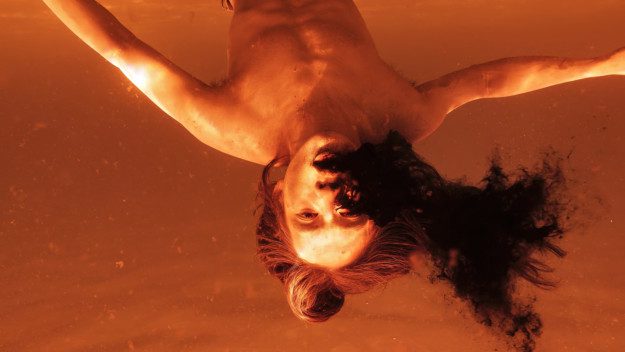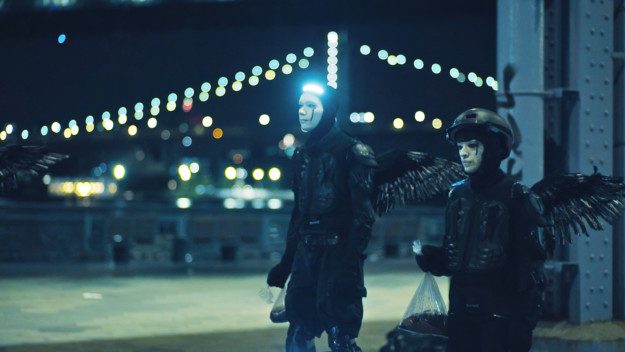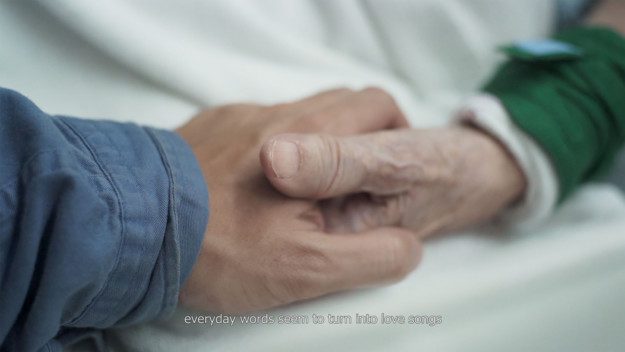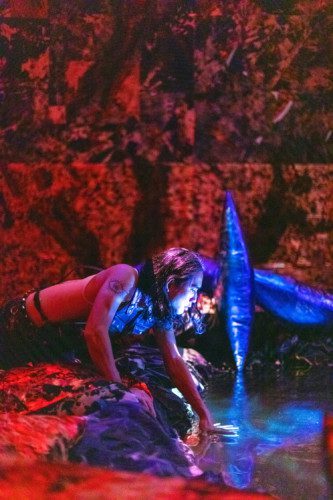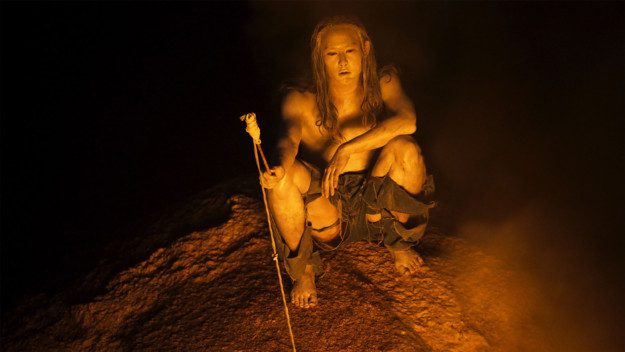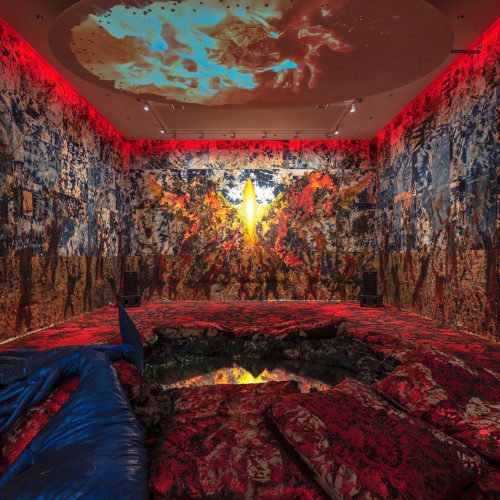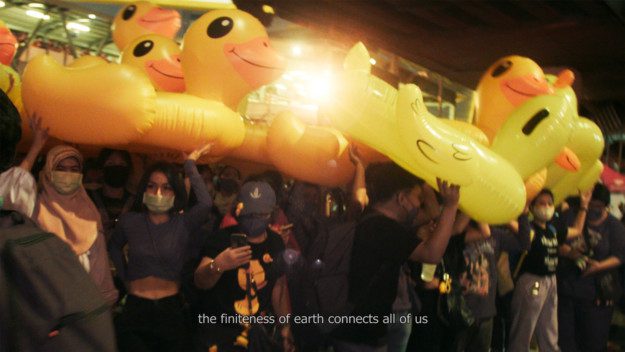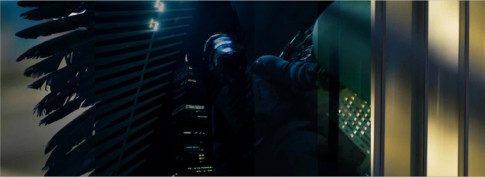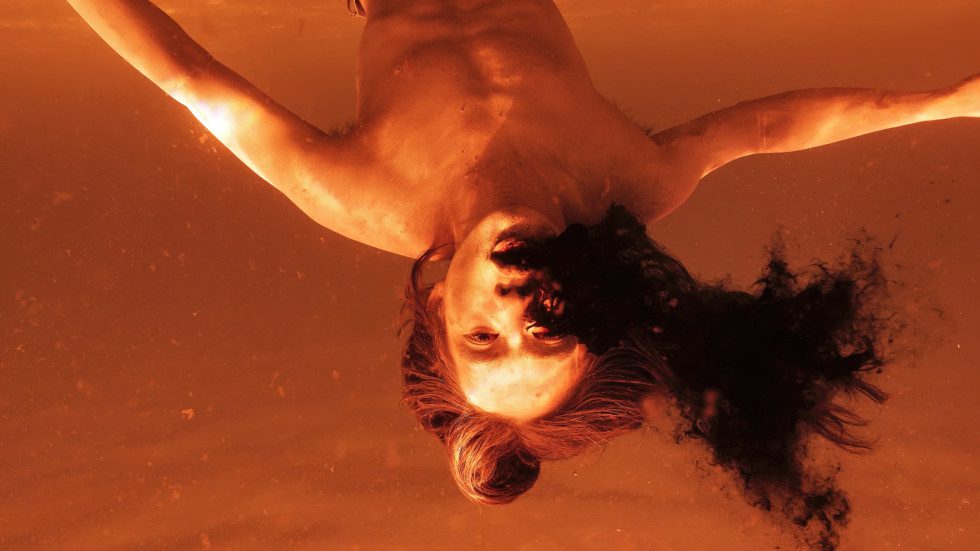
Korakrit Arunanondchai & Alex Gvojic, Songs for living, 2021 (filmstill) © Korakrit Arunanondchai Courtesy of the artists and Bangkok CityCity Gallery, Bangkok; Carlos/Ishikawa, London; C L E A R I N G, New York/Brussels; Kukje Gallery, Seoul/Busan. Co-commissioned by Migros Museum für Gegenwartskunst and Kunstverein in Hamburg with support from FACT, Liverpool
Korakrit Arunanondchai
From dying to living
17.9 2022 – 9.4 2023
Stockholm
The artist Korakrit Arunanondchai’s interdisciplinary works explore dualities such as life and death, past and present, dream and reality, reflection and rapture, man and machine, individualism and interconnectedness.
In a narrative vein, he fills Moderna Museet with hybridised form of documentary, film, installation, performance, painting and sculpture. Paintings expand into murals, video projections reflect onto water and sweep across the room.
As the author I exist in between the image and the audience, in the air of the room, telling the story. I am never completely inside one world or another. – Korakrit Arunanondchai
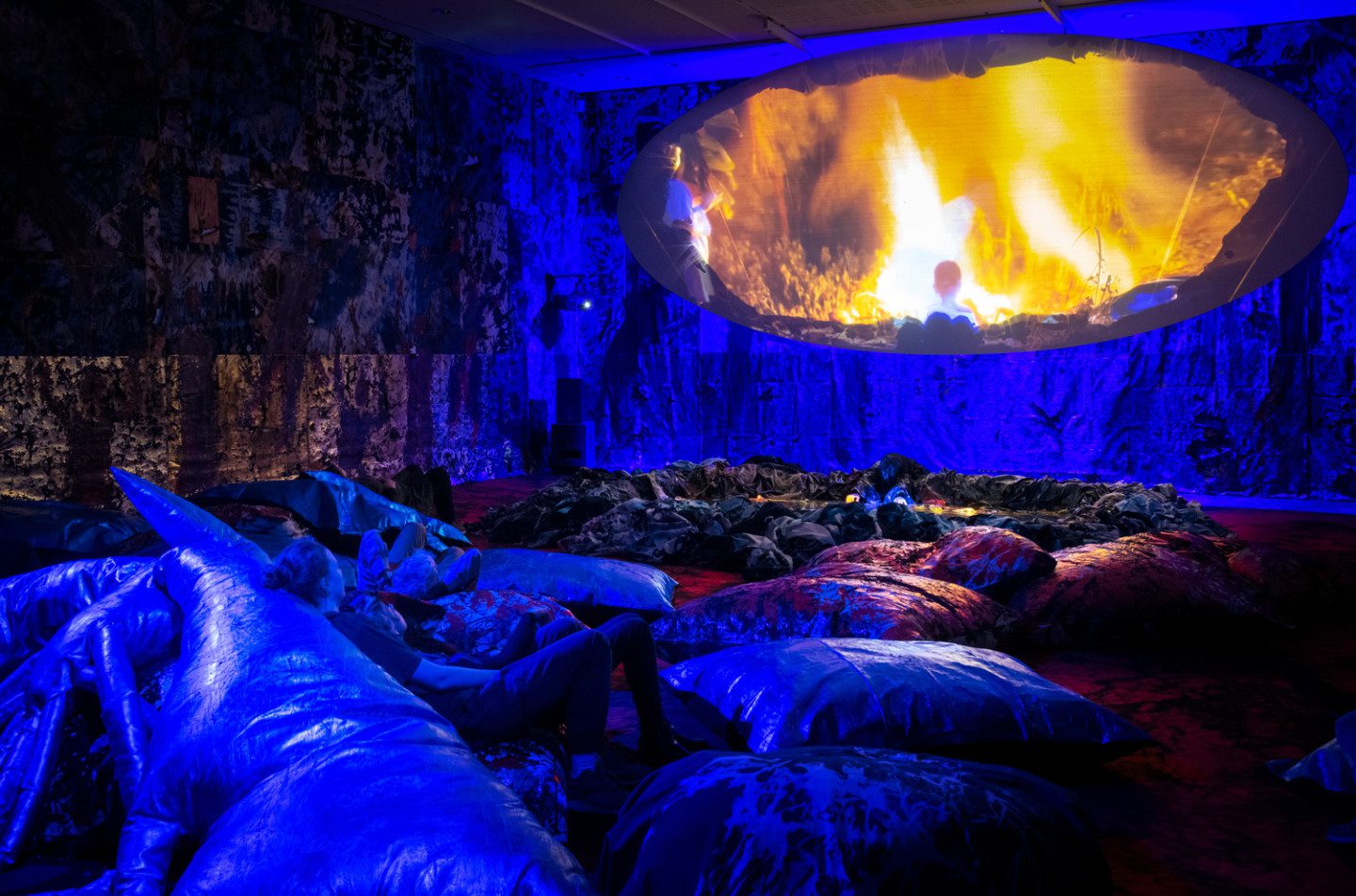
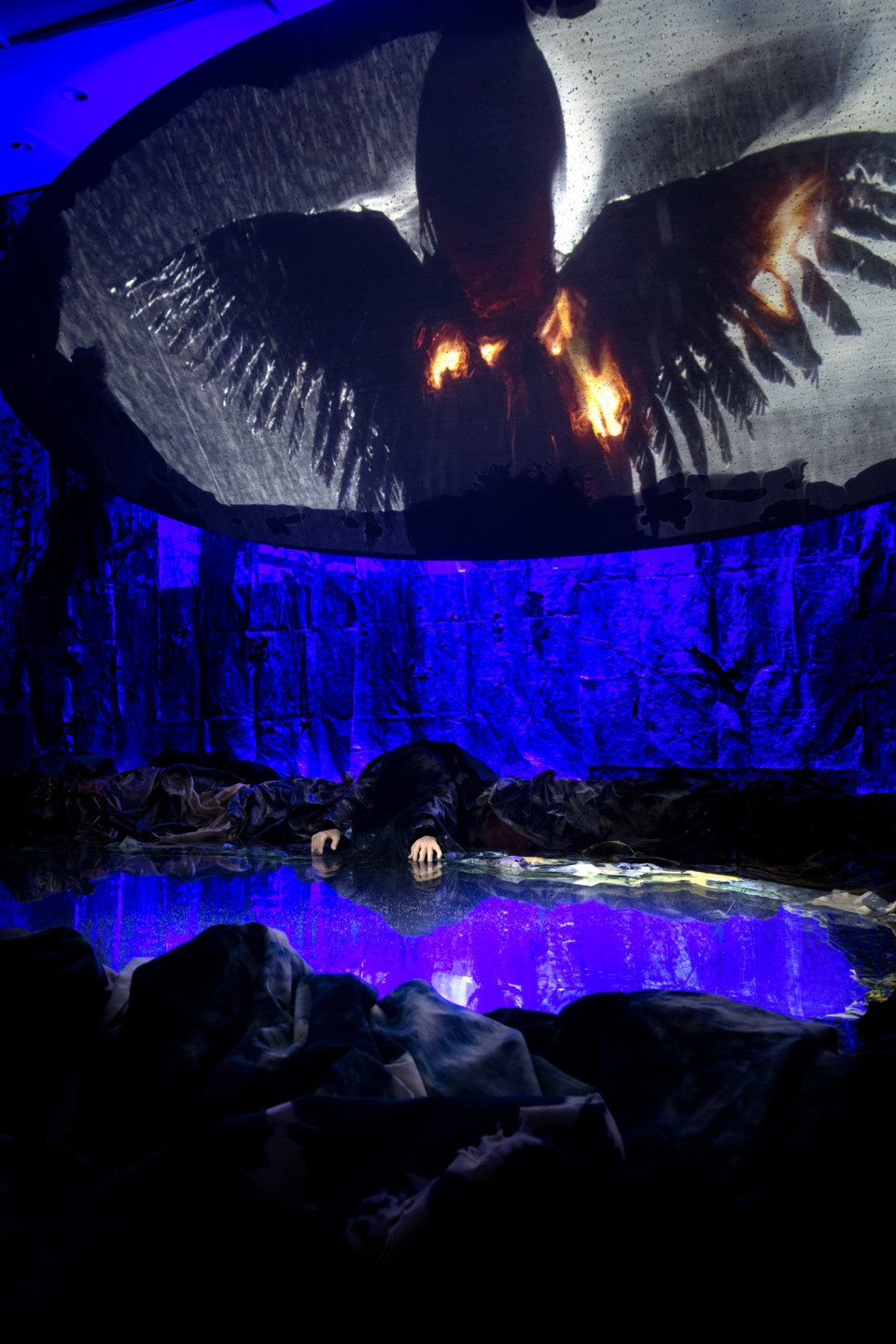
Korakrit Arunanondchai
Korakrit Arunanondchai (born in Bangkok, Thailand, in 1986) lives and works in New York and Bangkok. Raised in Thailand, he moved to study in the USA at the Rhode Island School of Design (2009) and Columbia University (2012).
His most recent solo exhibitions have been at the Migros Museum for Contemporary Art in Zürich (2022), Kunsthall Trondheim (2021), Serralves Museum in Porto (2020), the Secession in Vienna (2019), and Kasseler Kunstverein, Kassel (2018).
Arunanondchai’s work has also been presented as part of numerous group exhibitions, and at biennales and festivals, including Mountain/Time at Aspen Art Museum (2022), the Gwangju Biennale (2021), the Yokohama Triennale (2020), and the Venice and Whitney Biennales (2019).
Political and personal
Korakrit Arunanondchai’s practice addresses issues of inbetweenness and dissolved identity with regard to generation, gender and nationality. Animism, natural sciences, philosophy and poetry also play an important role in Arunanondchai’s art, where the power of storytelling is at the core, and the boundary between the personal, the spiritual and the geopolitical is blurred.
Arunanondchai also repeatedly sources material and ideas from conflicts in contemporary Thailand and portrays corrupt belief systems and propaganda from the Cold War in South-East Asia. He interweaves these themes with his own life and family history.
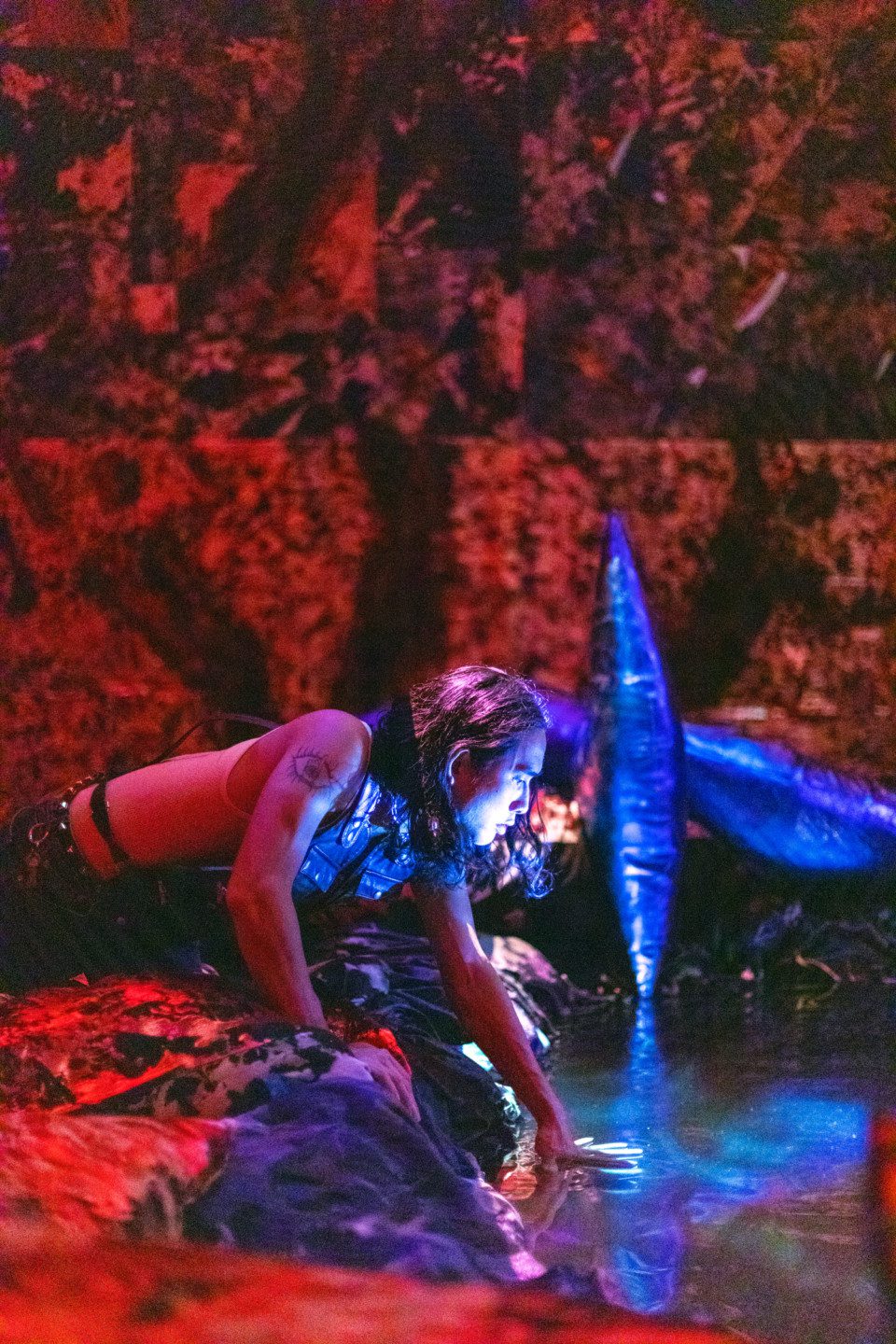
Korakrit Arunanondchai’s way of everting the individual’s relationship to the world around them, and upturning hierarchies between the personal, the esoteric, and the political, questions humans’ conditions in other contexts. – Lena Essling, curator
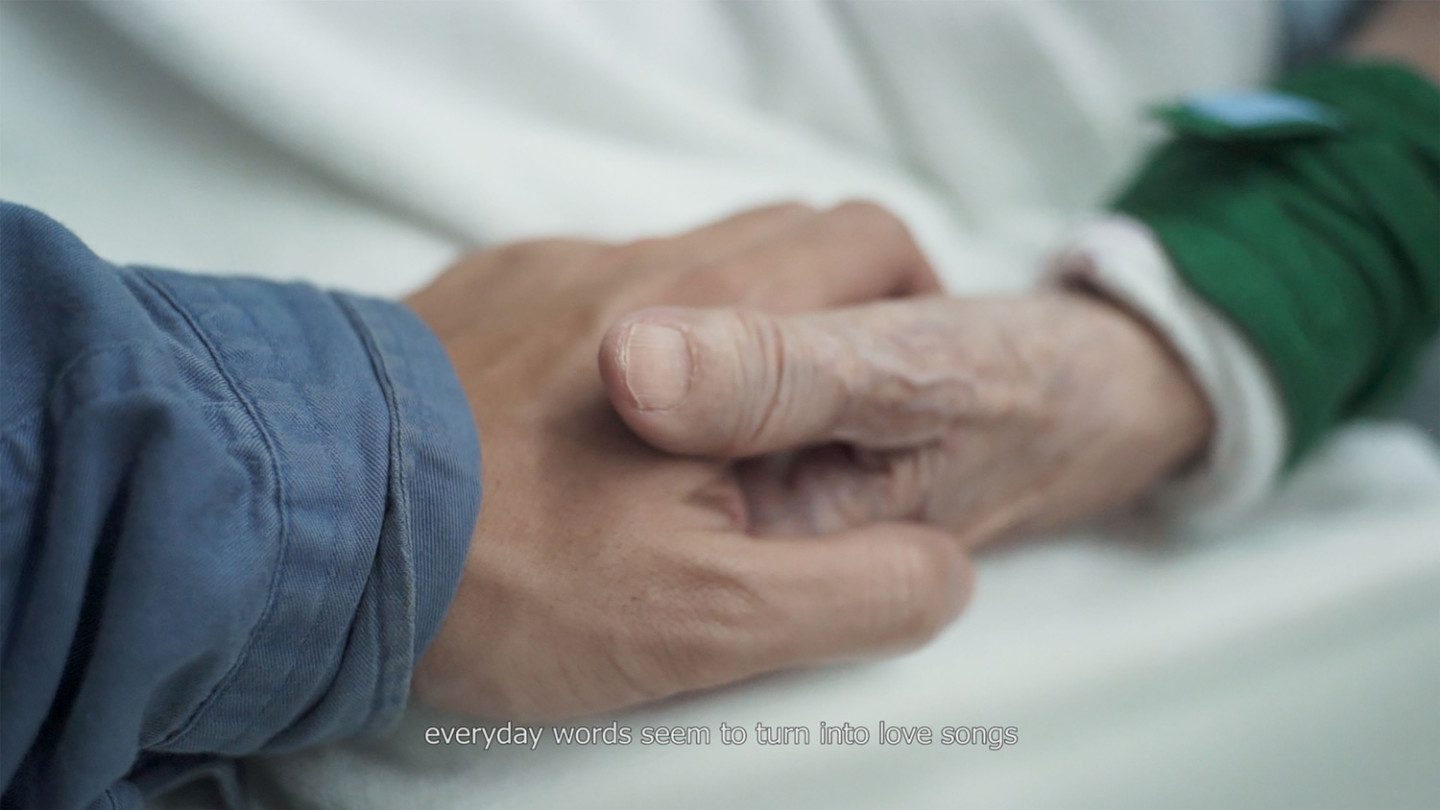
Exhibition Guide
Hear Korakrit Arunanondchai’s thoughts and ideas on the artworks in the exhibition on our Exhibition Guide.
– The submersion and remersion, the space in between, the motions of falling into and coming out of the water, is where the new work ”From dying to living” comes in: how to connect the two parts, he says in the film.
Visit the Exhibition Guide: Korakrit Arunanondchai – From dying to living
Collaboration and collectivity
Collaborations and collective work processes are essential to Korakrit Arunanondchai’s practice. Frequent collaborators are the filmmaker Alex Gvojic and the performance artist Tosh Basco, aka boychild.
The collaboration and the process of making and unmaking are as important as the finished work itself. – Korakrit Arunanondchai
New work for Moderna Museet
Korakrit Arunanondchai and Alex Gvojic have produced a new work, “From dying to living” (2022), which is also the title of the exhibition. In this work, the artist explores the threshold between the physical world and the spiritual realm.
“From dying to living” is based on two video works, “Songs for dying” and “Songs for living” from 2021, which constitute opposite poles in the exhibition.
Visit our Exhibition Guide to hear Korakrit Arunanondchai talk about the artworks in the exhibition.
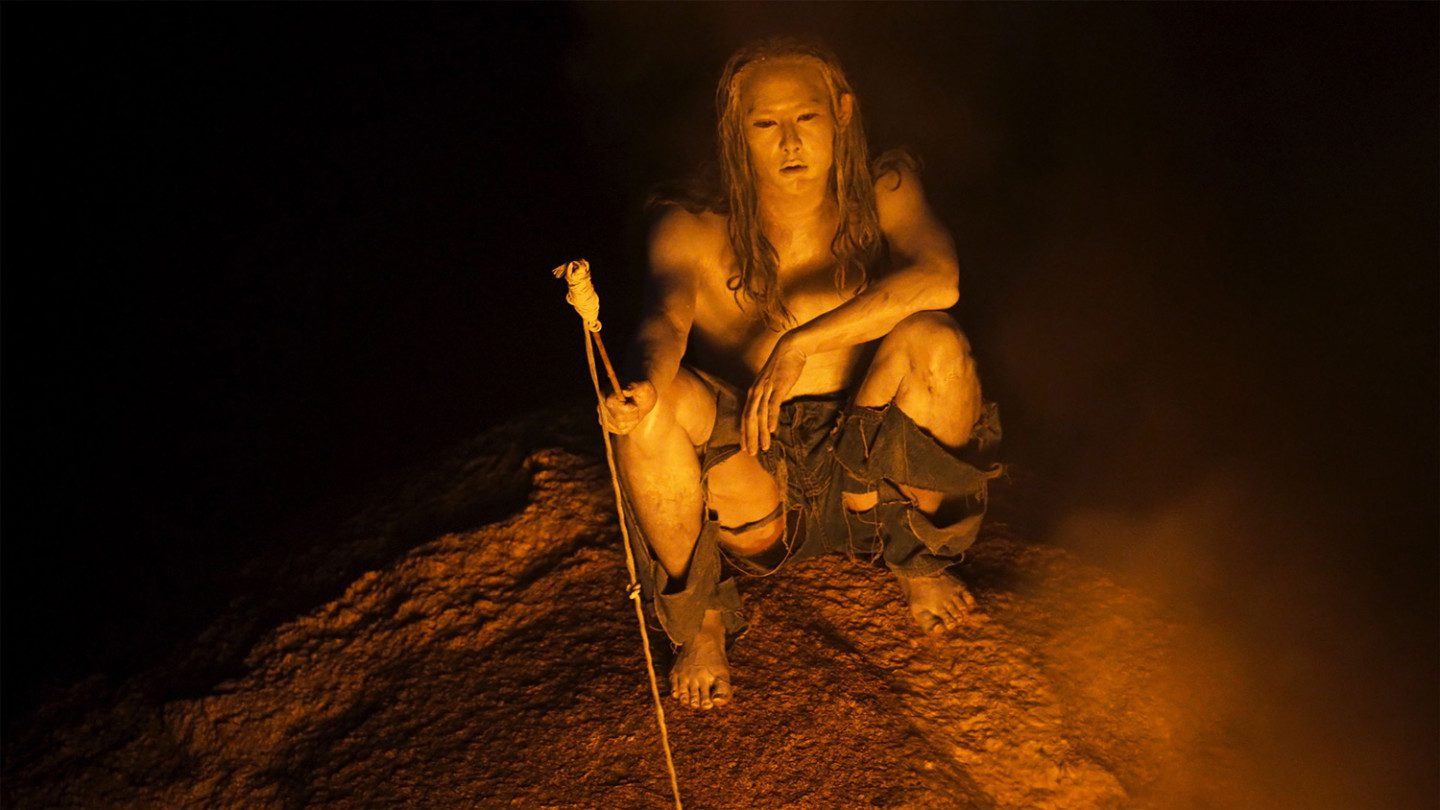
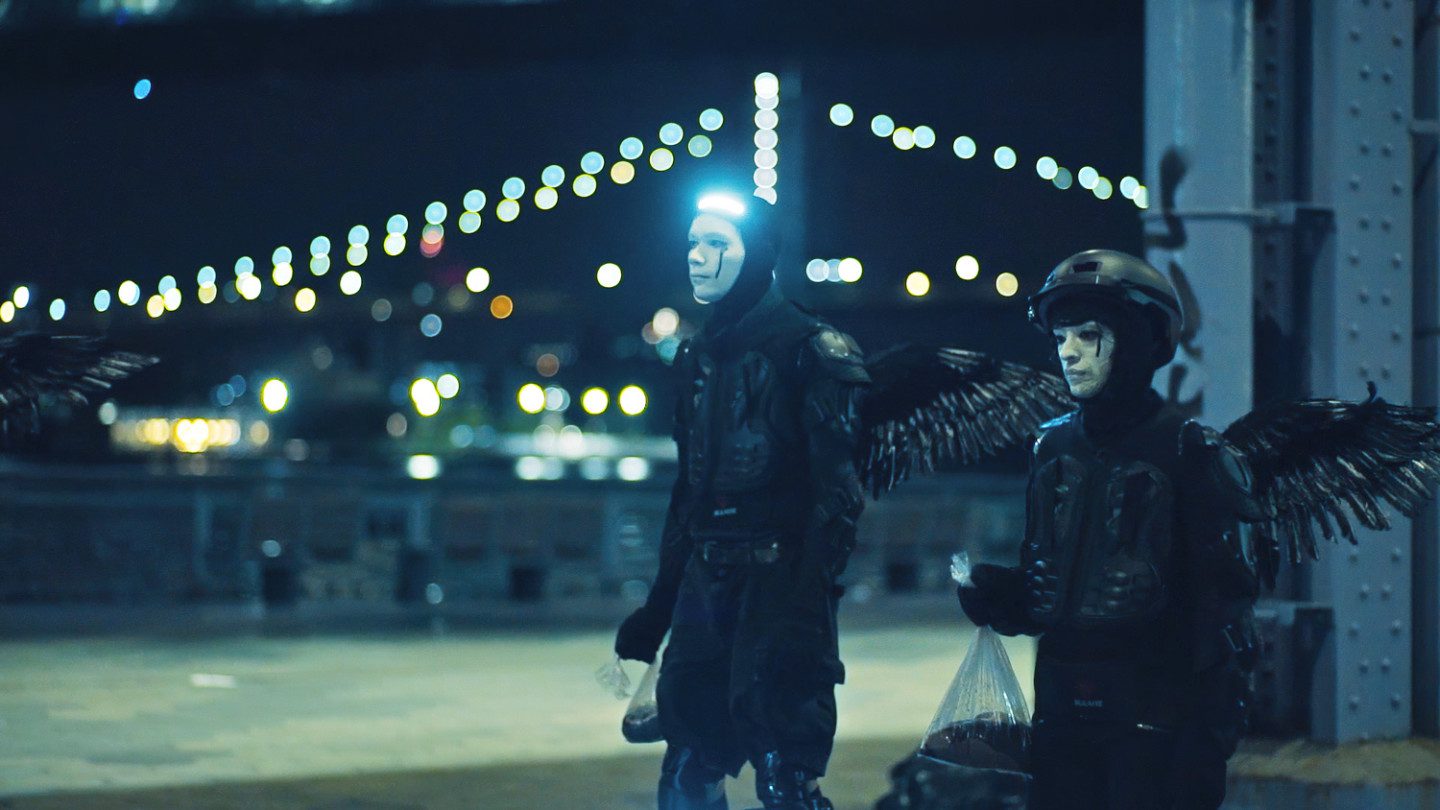
Opposites in the exhibition
The video work “Songs for dying” (2021) conflates 2020’s violent popular protests for democratic reform in Thailand with the censored and hushed-up massacre on the island of Jeju in post-war South Korea in 1948.
Central to the work is Korakrit Arunanondchai’s own personal farewell to his grandfather, whose death severs a link to understanding the consequences of the Cold War in this region – and also to the artist’s own family history.
“Songs for living” (2021) is a narrative underpinned by music and words borrowed from the French poet and philosopher Édouard Glissant, the Polish author and Nobel laureate Czesław Miłosz, and the French philosopher, mystic and activist Simone Weil.
Here, Korakrit Arunanondchai and the filmmaker Alex Gvojic together raise questions about affinity and reconciliation with something bigger than ourselves.
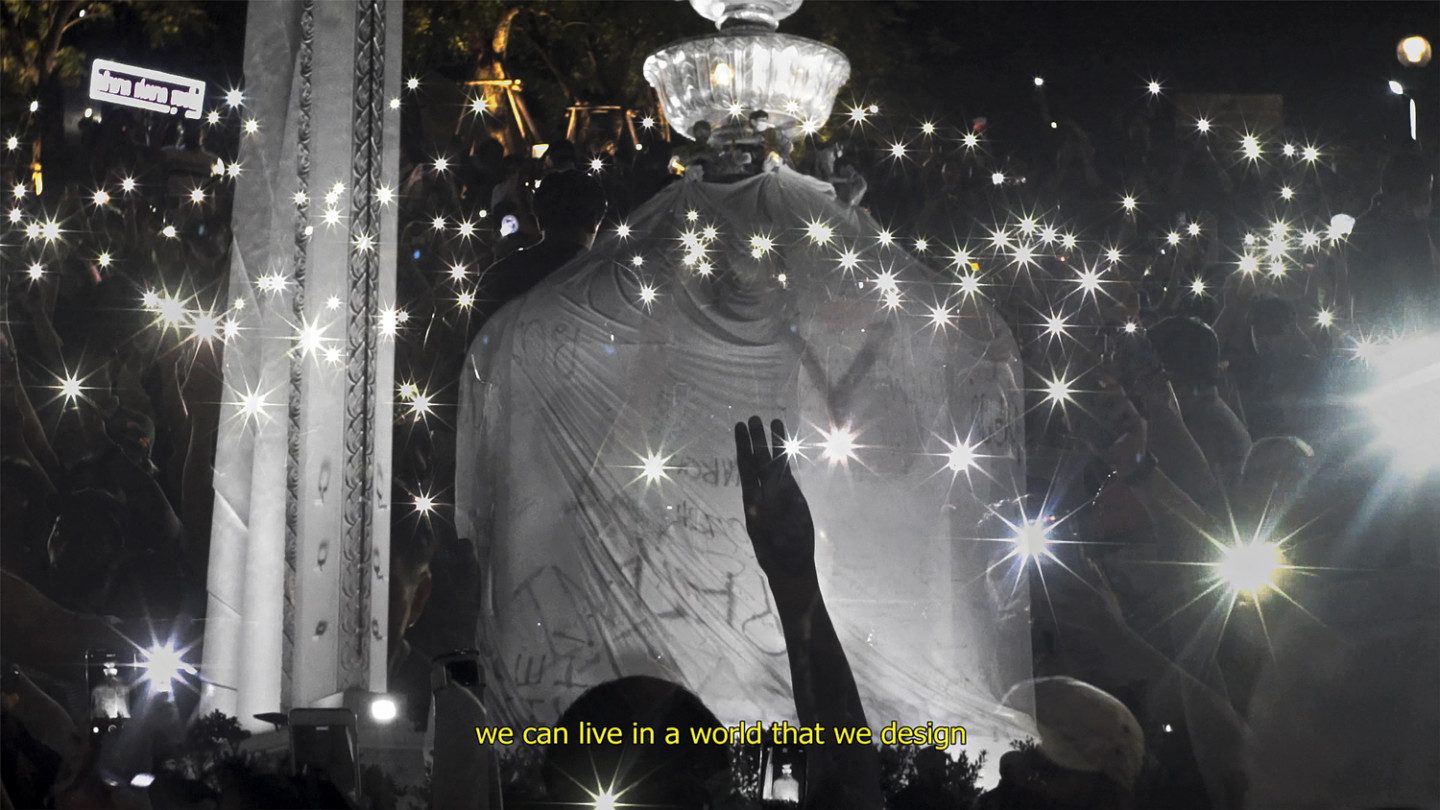
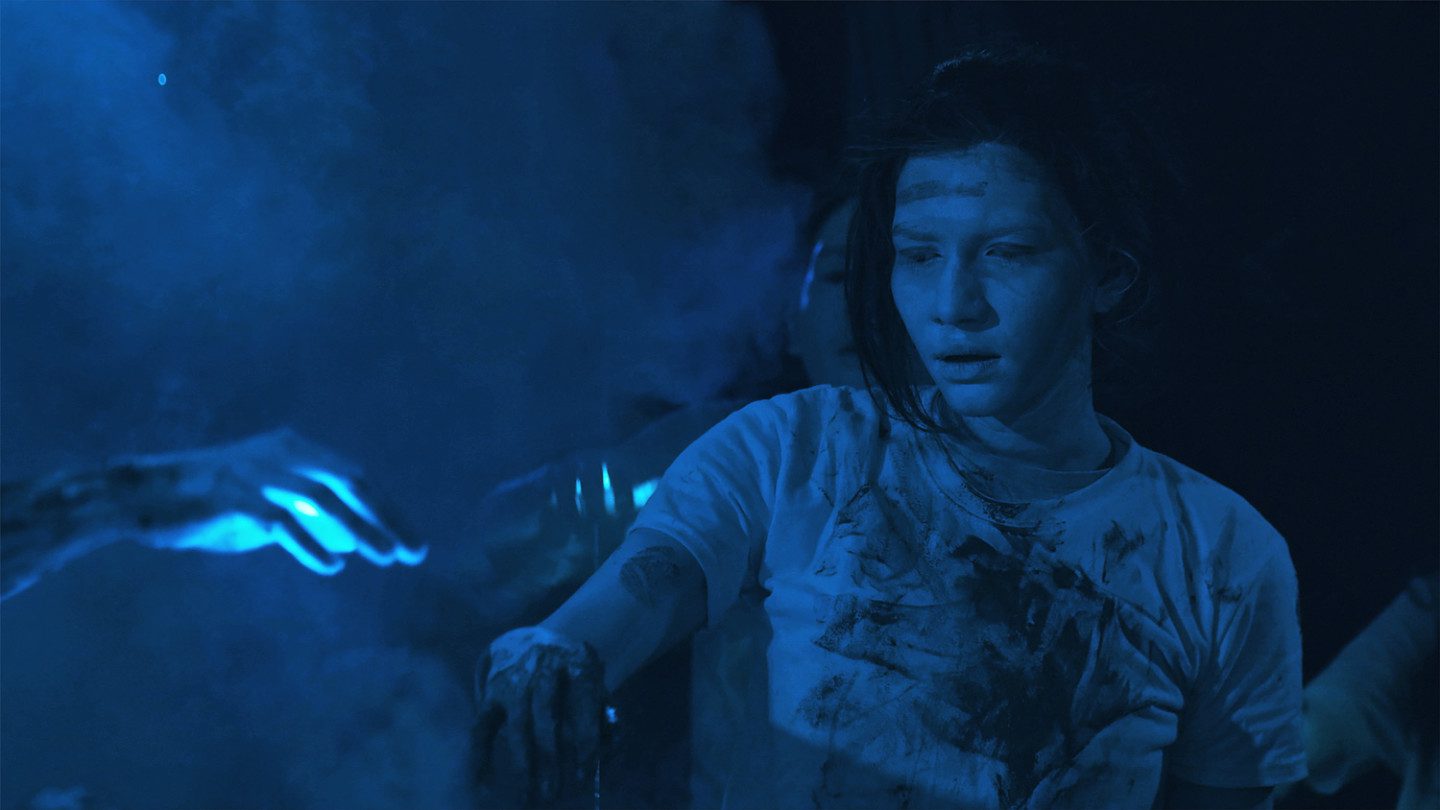
The exhibition contains dark galleries with immersive light and sound installations. Some works include flashing lights that may affect visitors who are photosensitive.

